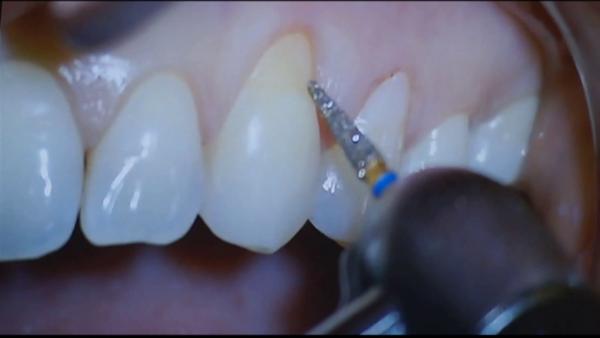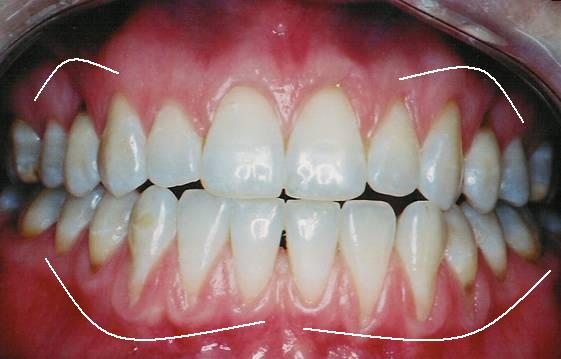Gum Health Tips Biogarphy
Source (google.com.pk)
You have so many good reasons to keep your family’s teeth and gums healthy. Their sparkling smiles. Being able to chew for good nutrition. Avoiding toothaches and discomfort. And new research suggests that gum disease can lead to other problems in the body, including increased risk of heart disease.
Fortunately, there are simple ways to keep teeth strong and healthy from childhood to old age. Here’s how:
Recommended Related to Oral Health
Bad Breath: Good and Bad Foods
Got bad breath? You may want to take a look at your diet. If your dental hygiene is great -- you brush your teeth twice a day, floss once a day, and clean your tongue -- your bad breath could be linked to your diet. Certain foods can taint your breath for hours and contribute to dragon breath in other ways. Here are some of the culprits: Garlic and onions. "Garlic and onions top the list when it comes to halitosis," says Lisa Harper Mallonee, MPH, RD, associate professor at Texas A&M...
Read the Bad Breath: Good and Bad Foods article > >
1. Start children early. Despite great strides in decay prevention, one in four young children develops signs of tooth decay before they start school. Half of all children between the ages of 12 and 15 have cavities. “Dental care should begin as soon as a child’s first tooth appears, usually around six months,” Caryn Solie, RDH, president of the American Dental Hygienists’ Association, tells WebMD. “Teeth can be wiped with a clean, damp cloth or a very soft brush. At about age 2, you can let kids try brushing for themselves -- although it’s important to supervise.”
2. Seal off trouble. Permanent molars come in around age 6. Thin protective coatings applied to the chewing surfaces of the back teeth can prevent decay in the pits and fissures. According to the Centers for Disease Control and Prevention, sealants can significantly reduce caries. Yet only one in three U.S. kids receives dental sealants. Talk to your dental professional.
3. Use enough -- but not too much -- fluoride. The single biggest advance in oral health has been fluoride, which strengthens enamel, making it less likely to decay. Three out of four Americans drink water that is fluoridated. If your water isn’t fluoridated, talk to your dental professional, who may suggest putting a fluoride application on your teeth. Many toothpastes and mouth rinses also contain fluoride. Fluoride should be used sparingly in young children -- no more than a pea-sized dab on the toothbrush. Too much can cause white spots on teeth.
4. Brush twice a day and floss daily. Gum disease and tooth decay remain big problems -- and not just for older people. Three-fourths of teenagers have gums that bleed, according to the ADHA. Along with the basic advice, remember:
Toothbrushes should be changed 3 to 4 times a year.
Teenagers with braces may need to use special toothbrushes and other oral hygiene tools to brush their teeth. Talk to your dentist or orthodontist.
Older people with arthritis or other problems may have trouble holding a toothbrush or using floss. Some people find it easier to use an electric toothbrush. Others simply put a bicycle grip or foam tube over the handle of a regular toothbrush to make it easier to hold.
5. Rinse or chew gum after meals. In addition to brushing and flossing, rinsing your mouth with an antibacterial rinse can help prevent decay and gum problems. Chewing sugar-free gum after a meal can also protect by increasing saliva flow, which naturally washes bacteria away and neutralizes acid.
ith proper care, your teeth and gums can stay healthy throughout your life. The healthier your teeth and gums are, the less risk you have for tooth decay and gum disease.
How Should I Care for My Teeth and Gums?
There are five basic steps to caring for teeth and gums:
Brushing
Flossing
Eating right
Visiting the dentist
Rinsing
Tips for Brushing Teeth
Brush at least twice a day. If you can, brush after every meal. Ideally wait 30 minutes after eating, this will allow any enamel that softened from acid during eating to re-harden and not get brushed away. Brushing removes plaque, a film of bacteria that clings to teeth. When bacteria in plaque come into contact with food, they produce acids. These acids lead to cavities. To brush:
Place a pea-sized dab of fluoride toothpaste on the head of the toothbrush. (Use a soft toothbrush.)
Place the toothbrush against the teeth at a 45-degree angle up to the gum line.
Move the brush across the teeth using a small circular motion. Continue with this motion cleaning one tooth at a time. Keep the tips of the bristles against the gum line. Avoid pressing so hard that the bristles lie flat against the teeth. (Only the tips of the toothbrush clean the teeth.) Let the bristles reach into spaces between teeth.
Brush across the top of the chewing surfaces of the teeth. Make sure the bristles get into the grooves and crevices.
Use the same small circular motion to clean the backside of the upper and lower teeth -- the side that faces the tongue.
To clean the inside of the bottom front teeth, angle the head in an up-and-down position toward the bottom inside of the mouth and move the toothbrush in a small circle.
For the inside of the top front teeth, angle the brush in an up-and-down position with the tip of the head pointing towards the roof of the mouth. Move the toothbrush in a small circle.
Give your tongue a few gentle brush strokes, brushing from the back of your tongue forward. Do not scrub. This helps remove bacteria and freshens your breath.
After brushing your teeth for two to three minutes, rinse your mouth with water.
Replace your toothbrush with a new one every three to four months.
Tips for Flossing Your Teeth
Floss teeth once a day. Flossing gets rid of food and plaque between the teeth, where your toothbrush cannot reach. If plaque stays between teeth, it can harden into tartar, which must be removed by a dentist or hygienist. To floss:
Remove about an 18-inch strip of floss from the dispenser.
Wind the floss around the middle fingers of each hand, leaving a 1-inch section open for flossing. Floss the top teeth first, then the bottom.
Place the floss in your mouth and use your index fingers to push the floss between the teeth. Be careful not to push too hard and injure the gums.
Move the floss up and down against the tooth and up and around the gum line. The floss should form a C-shape around the tooth as you floss.
Floss between each tooth as well as behind the back teeth.
Use a clean section of floss as needed and take up used floss by winding it around the fingers.
Gum Health Tips Health Tips Of The Day In Urdu In Hindi For Kids For Men In Telugu Images Quotes In Tamil Photos

Gum Health Tips Health Tips Of The Day In Urdu In Hindi For Kids For Men In Telugu Images Quotes In Tamil Photos

Gum Health Tips Health Tips Of The Day In Urdu In Hindi For Kids For Men In Telugu Images Quotes In Tamil Photos

Gum Health Tips Health Tips Of The Day In Urdu In Hindi For Kids For Men In Telugu Images Quotes In Tamil Photos

Gum Health Tips Health Tips Of The Day In Urdu In Hindi For Kids For Men In Telugu Images Quotes In Tamil Photos

Gum Health Tips Health Tips Of The Day In Urdu In Hindi For Kids For Men In Telugu Images Quotes In Tamil Photos

Gum Health Tips Health Tips Of The Day In Urdu In Hindi For Kids For Men In Telugu Images Quotes In Tamil Photos

Gum Health Tips Health Tips Of The Day In Urdu In Hindi For Kids For Men In Telugu Images Quotes In Tamil Photos

Gum Health Tips Health Tips Of The Day In Urdu In Hindi For Kids For Men In Telugu Images Quotes In Tamil Photos

Gum Health Tips Health Tips Of The Day In Urdu In Hindi For Kids For Men In Telugu Images Quotes In Tamil Photos

Gum Health Tips Health Tips Of The Day In Urdu In Hindi For Kids For Men In Telugu Images Quotes In Tamil Photos
No comments:
Post a Comment